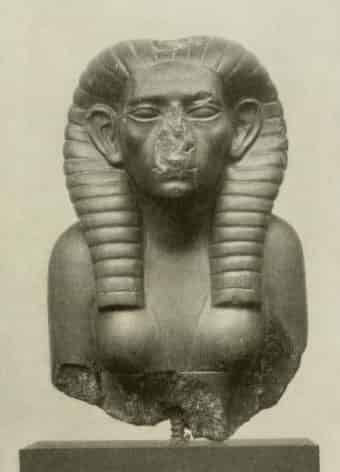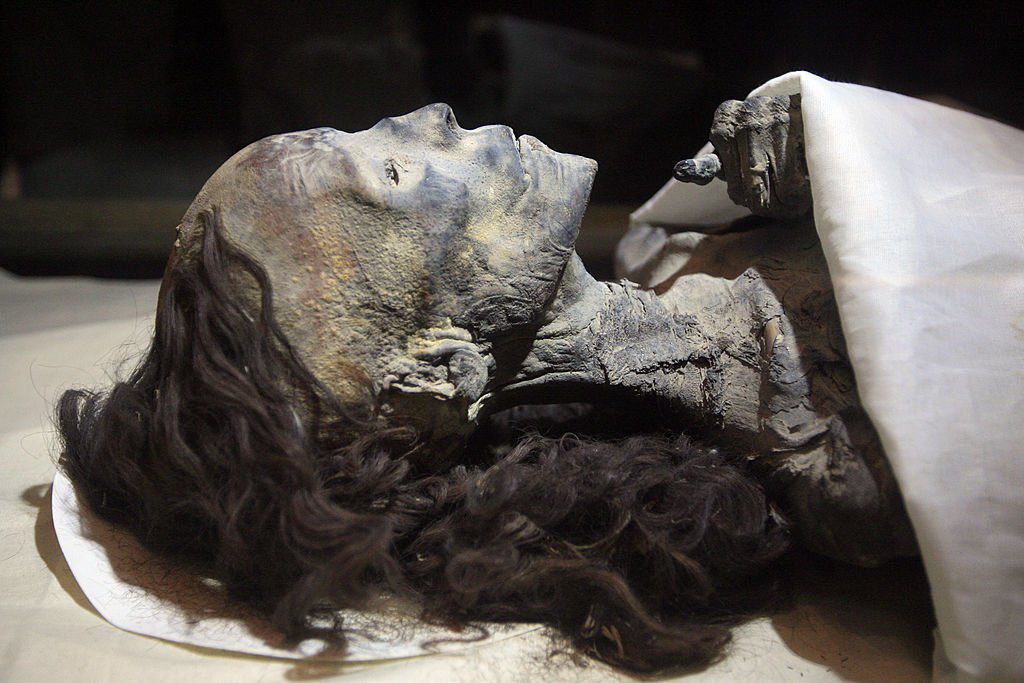During the three thousand years of Pharaonic history, the title of lord of the two lands almost always fell in the hands of men. But on some occasions the pharaoh was not a man, but a woman who normally reached the throne in periods of regency, and in turbulent or power vacuum times.
“What is the king of Upper and Lower Egypt? He is the god by whom we live, the father and mother of all men, he alone, without equal.”
For the ancient Egyptians it was something that was in harmony with natural laws and with the maintenance of cosmic balance that the position of pharaoh, the highest authority on earth, the representative of the gods and interlocutor between them and humans, was held by a man; in fact, the kings were identified with Horus, the god represented as a man with the head of a falcon, son of Isis and Osiris, two of the most important deities of the Egyptian pantheon.
We know, yes, that throughout the history of Egypt, there were many queens, wives and mothers of pharaohs, who exercised great power and influence over the decisions of the State, and even some of them contributed to change history, as is the case of the great Theban queens of the 17th dynasty (c. 1540 BC), such as Tetisheri or Ahhotep, whose actions were fundamental in the war against the Hyksos (Ahhotep was even awarded a valuable military decoration for valor, the “necklace of flies”).
Many of the names and deeds of these women have come down to us: Hetepheres, Khentkaus, Ahmose-Nefertari, Tiye, Isetnofret, Nefertari, Nefertiti …
We know that they transmitted power, and we also know that they were influential and listened to, but they always acted in the shadow of their husbands, who were actually those who wielded the effective power that the title of pharaoh carried.
A woman on the throne of the Two Lands?
However, we also know that throughout the history of the Country of the Nile there were some women who, beyond their status as wives or mothers, occupied themselves, with full rights, the royal throne.
Of all these, perhaps the most prominent is Hatshepsut, at the beginning of the 18th dynasty (1539-1292 BC). Daughter and wife of pharaohs, Hatshepsut came to power as regent to her nephew and stepson Thutmose III, but ended up ruling ancient Egypt for about twenty years, and not only as regent of a minor pharaoh, but presenting herself as a crowned pharaoh.
Another famous queen who held the title of pharaoh was Cleopatra VII, already at the end of the Ptolemaic period, shortly before the definitive conquest of Egypt by Rome.
But, besides Hatshepsut and Cleopatra, were there other women who held the throne of the Two Lands as reigning pharaoh?
Well, apparently yes, although there were not many. According to the Roman historian Diodorus Siculus, who lived in the 1st century BC, there were only five, although it is thought that there may have been as many as eight.
Here we expose the fascinating stories of some women who possibly ruled Egypt as pharaoh throughout its more than three thousand years of history.

Merneith, at the dawn of Egypt
During the First Dynasty (2900-2730 BC), at the dawn of Pharaonic Egypt, the figure of this queen emerged from the shadows of time, whose name means “the beloved of the goddess Neith”, who apparently held a royal title.
She was the wife of King Djet / Uadji, and after being widowed she had to act as regent for her son Den, the heir to the throne.
Egyptologist Flinders Petrie discovered the sumptuous royal mastaba where Merneith was buried at Abydos and initially cataloged it as belonging to a male pharaoh.
But did Merneith ever hold the title of pharaoh?
The finding of a funerary temple dedicated to this woman at Abydos, and the discoveries at Saqqara of a solar boat, the discovery of several vessels with the name of Merneith inscribed that were located in mastaba 3503, added to the fact that her name appears on a royal list from the impression of a cylinder seal discovered in the tomb of her son Den, seem to confirm that, as at a minimum, while her regency lasted.
Merneith ruled with the prerogatives and powers of a pharaoh, acting as the effective king of Egypt. But years later, in the Royal List of Horus Ka, at the end of the dynasty, her name no longer appears among those of the monarchs.
Khentkaus I and Khentkaus II
These two queens lived respectively at the end of the Fourth Dynasty (2543-2436 BC) and during the Fifth Dynasty (2435-2306 BC) and, curiously, representations of both have been found with royal attributes, such as the false beard and the Uraeus (the cobra and vulture, symbols of pharaonic power).
The former is even mentioned as “The King of Upper and Lower Egypt and Mother of the King of Upper and Lower Egypt.” But who were these women who shared a name and dynasty?
Khentkaus I was a daughter of Menkaure, the owner of the smallest pyramid in Giza. In 1932, the archaeologist Selim Hassan found her tomb, a magnificent mastaba in the form of a gigantic sarcophagus.
The queen was the wife of the last pharaoh of the Fourth Dynasty, Shepseskaf, and the mother of the first pharaoh of the Fifth Dynasty, Userkaf.
Khentkaus I apparently acted as regent for three of her children: Userkaf, Sahure and Neferirkare Kakai. In the tomb of the sovereign at Giza, the inscriptions show her as the ruling pharaoh, but she is also not on the later royal lists.
As for the second Khentkaus, we really know little. From her we have an auxiliary pyramid and a funerary temple in the Abusir necropolis, in addition to some representation of her with the attributes of pharaonic power.
Nitocris the avenger
A list of kings of Egypt such as the Turin Papyrus mentions the name of Nitocris as effective pharaoh of Egypt, and the priest Manetho, author of a list of kings of Egypt, recognizes her as the last pharaoh of ancient Egypt’s Sixth Dynasty (2305-2118 BC).
In his History of Egypt, Manetho says the following: “There was a woman, Nitocris, who reigned; she was braver than all men and more beautiful than all women of her time, endowed with beautiful skin and rosy cheeks. Nitocris built the third pyramid that looks like a mountain.”
It seems that Nitocris married her brother Merenre II, but when she was soon a widow (apparently, the king was assassinated) she ruled alone for two years as pharaoh.
Her legend spanned the centuries, and reached the ears of the Greek historian Herodotus, who during his trip to Egypt in the 6th century BC, told the following about the revenge of Nitocris:
“They told me that she, to avenge her brother, invited the guilty of the crime to a banquet and drowned them by flooding the room with water from the Nile. In the end, when the queen achieved her revenge, always according to Herodotus, “she rushed into a chamber full of ashes to avoid reprisals…. “.

Sobekneferu, the end of a dynasty
After the turbulent times of the end of the Old Kingdom, the Theban pharaohs of the 12th dynasty (1939-1760 BC) carried out the second reunification of Egypt.
These two hundred years of Egypt’s history are described as a prosperous time with great benefits for the country. But at the end of the dynasty, a series of disputes between provincial governors (nomarchs) brought back a period of instability.
It is in this context that the figure of Queen Sobekneferu emerges. But who was this woman? Her name appears on various royal lists and inscriptions, and five statues of her have been located.
It seems that she was the daughter of Amenemhat III and sister of Amenemhat IV, whom she possibly married. She appears as the last crowned king of the Twelfth Dynasty with the following titles: “Beloved of Ra”, “Lady of the Two Lands”, “Daughter of Power”, “Eternal of Radiant Apparitions”, “The King of Upper and Lower Egypt Sobekneferu”.

The enigmatic Twosret
Following Hatshepsut’s sole rule during the 18th dynasty (1539-1292 BC), it took several centuries for another woman to access the throne of the Two Lands.
It was at the end of the Nineteenth Dynasty (1292-1191 BC), whose first kings, such as Seti I and Ramses II, are the best known. After the death of Merneptah, son and successor of Ramses II, his son Seti II ascended to the throne of Egypt.
Seti had a sickly son named Siptah, from a secondary wife. Seti also married a woman named Twosret, of uncertain origin. After the death of Seti II, Twosret apparently acted as regent for the young Siptah, who died shortly thereafter.
Twosret then decided to rule alone and proclaimed herself “King of Upper and Lower Egypt”, even including in her name the title of “Sa-Ra”, which means daughter of Ra (the Sun god).
Twosret had a tomb built for her in the Valley of the Kings, like her male predecessors, and also had a Temple of Millions of Years (funerary temple) erected near the Ramesseum. But Twosret did not have a long reign.
Two years later she was deposed by Setnakhte, the founder of the Twentieth Dynasty (1190-1077 BC), a character as ambitious as she, who haunted the memory of the queen and erased her name from all her monuments. He even usurped the magnificent tomb that she had erected in the Theban necropolis.
Divine birth of the pharaoh: Hatshepsut
We cannot end this list of female pharaohs without referring to how Hatshepsut legitimized her accession to the throne of the Two Lands, with the support of the clergy of Amun.
For this, the myth of the “theogamy” or divine birth of the pharaoh was devised, making her the daughter of the god Amun, who, taking the figure of her father, Thutmose I, impregnated her mother, Queen Ahmose.
The main god of the dynasty would legitimize her reign with these words: “Amun made the gods all of Upper and Lower Egypt see her (to Hatshepsut). Words spoken by Amun Ra, Lord of Heaven and King of the gods: ‘See me daughter Henemet-Amun Hatshepsut, may she live. Love her and take pleasure in her ‘(…). She will remain at the head of the ka of all living, along with her ka, as King of Upper and Lower Egypt on the throne of Horus, as Ra, eternally.”
First photo: Cleopatra and her son Caesarion. Relief of the Dendera temple.
Source: Carme mayans, National Geographic






